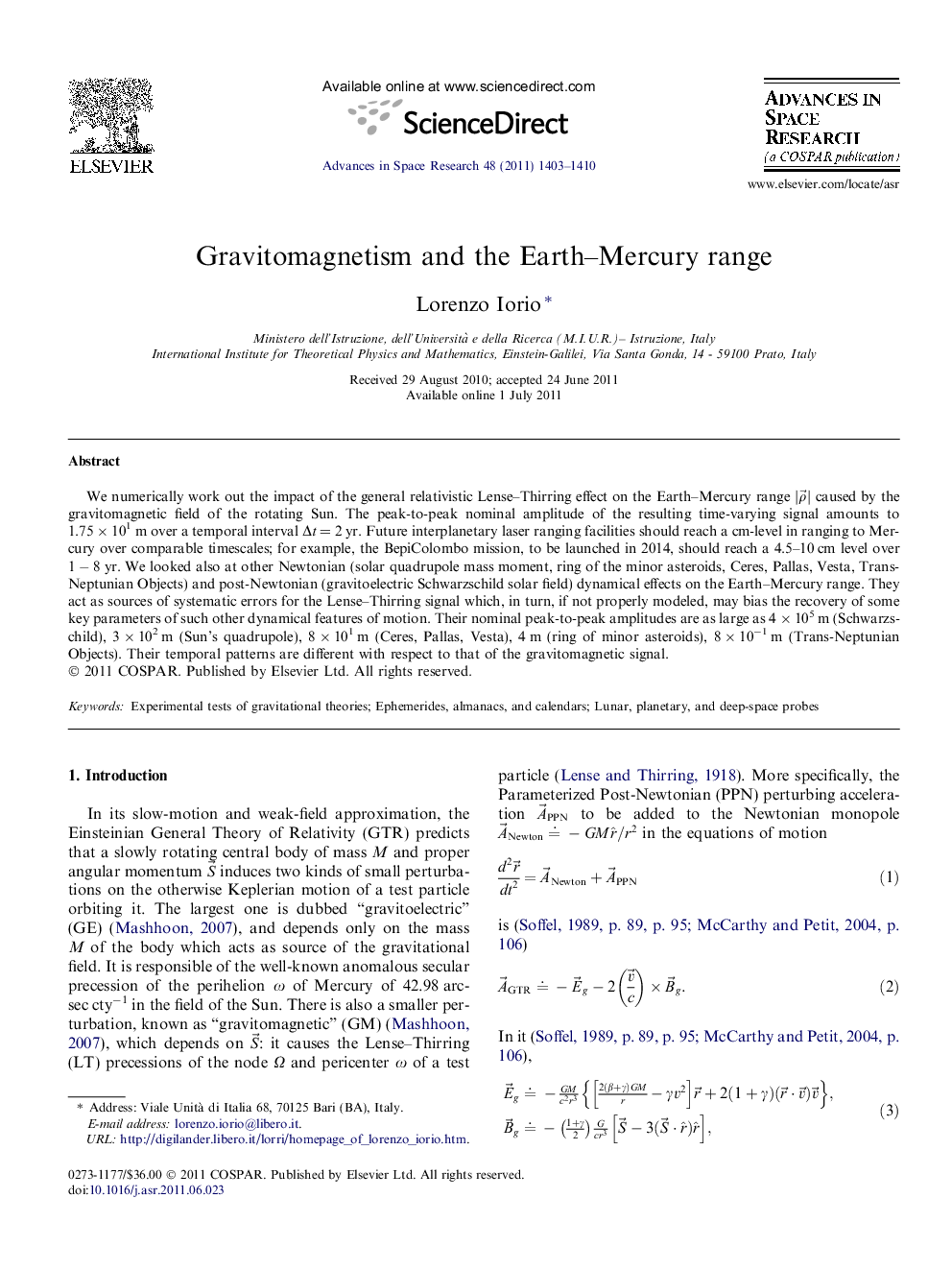| کد مقاله | کد نشریه | سال انتشار | مقاله انگلیسی | نسخه تمام متن |
|---|---|---|---|---|
| 1765750 | 1020117 | 2011 | 8 صفحه PDF | دانلود رایگان |
عنوان انگلیسی مقاله ISI
Gravitomagnetism and the Earth-Mercury range
دانلود مقاله + سفارش ترجمه
دانلود مقاله ISI انگلیسی
رایگان برای ایرانیان
کلمات کلیدی
موضوعات مرتبط
مهندسی و علوم پایه
علوم زمین و سیارات
علوم فضا و نجوم
پیش نمایش صفحه اول مقاله

چکیده انگلیسی
We numerically work out the impact of the general relativistic Lense-Thirring effect on the Earth-Mercury range |Ïâ| caused by the gravitomagnetic field of the rotating Sun. The peak-to-peak nominal amplitude of the resulting time-varying signal amounts to 1.75 Ã 101 m over a temporal interval Ît = 2 yr. Future interplanetary laser ranging facilities should reach a cm-level in ranging to Mercury over comparable timescales; for example, the BepiColombo mission, to be launched in 2014, should reach a 4.5-10 cm level over 1 â 8 yr. We looked also at other Newtonian (solar quadrupole mass moment, ring of the minor asteroids, Ceres, Pallas, Vesta, Trans-Neptunian Objects) and post-Newtonian (gravitoelectric Schwarzschild solar field) dynamical effects on the Earth-Mercury range. They act as sources of systematic errors for the Lense-Thirring signal which, in turn, if not properly modeled, may bias the recovery of some key parameters of such other dynamical features of motion. Their nominal peak-to-peak amplitudes are as large as 4 Ã 105 m (Schwarzschild), 3 Ã 102 m (Sun's quadrupole), 8 Ã 101 m (Ceres, Pallas, Vesta), 4 m (ring of minor asteroids), 8 Ã 10â1 m (Trans-Neptunian Objects). Their temporal patterns are different with respect to that of the gravitomagnetic signal.
ناشر
Database: Elsevier - ScienceDirect (ساینس دایرکت)
Journal: Advances in Space Research - Volume 48, Issue 8, 15 October 2011, Pages 1403-1410
Journal: Advances in Space Research - Volume 48, Issue 8, 15 October 2011, Pages 1403-1410
نویسندگان
Lorenzo Iorio,